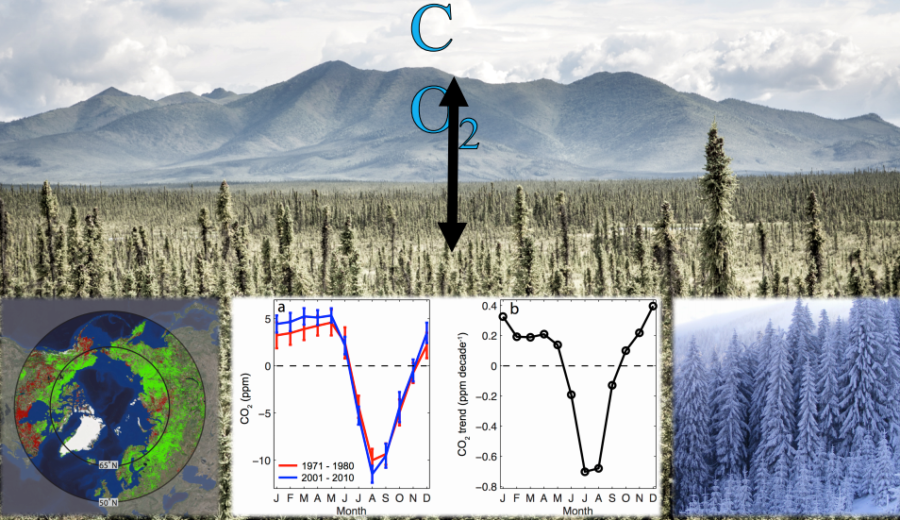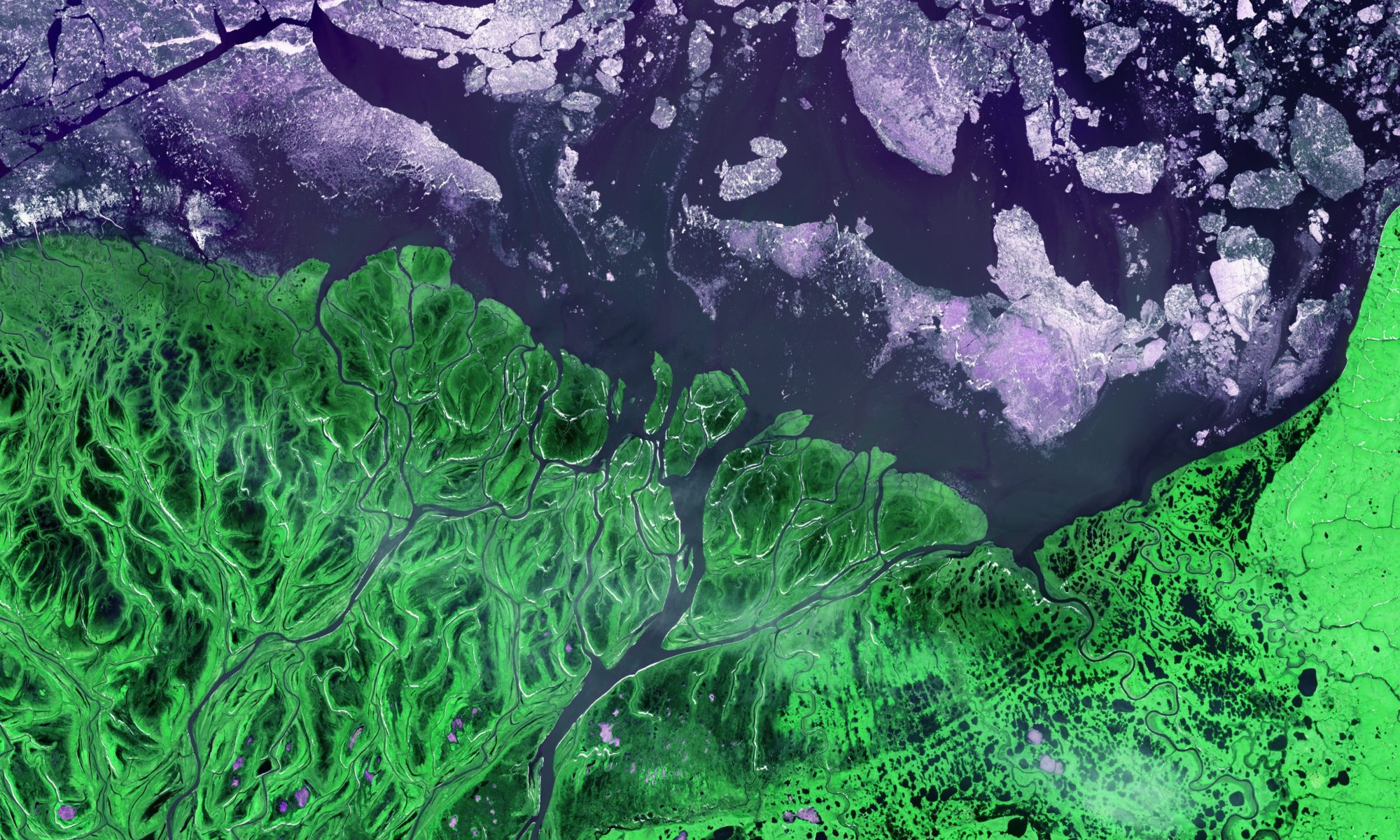Understanding the Causes and Implications of Enhanced Seasonal CO2 Exchange in Boreal and Arctic Ecosystems

Principal Investigator
Scott Goetz
Collaborators
Brendan Rogers (Woods Hole Research Center), Gretchen Keppel-Aleks (University of Michigan), Susan Natali and Christopher Schwalm (Woods Hole Research Center), Amber Soja (National Institute of Aerospace), Bruce Cook (NASA Goddard Space Flight Center), Gerald Frost (ABR Inc. Environmental Research), Matthew Hansen (University of Maryland), John Kimball (University of Montana), William Riley (Lawrence Berkeley National Laboratory), Kevin Schaefer (National Snow and Ice Data Center)
Overview
During the last half century, the magnitude of seasonal variability in CO2 exchange has increased by 30-50% in high latitude environments, with two thirds of this change attributed to increased CO2 flux in boreal forest and arctic tundra. At the broadest scale, this increase in amplitude can be caused by higher net productivity during the growing season (plants taking in more CO2), higher respiration in the dormant season (plants releasing more CO2), or both. However, the extent to which each of these mechanisms contribute to increasing CO2 exchange is still unknown, as are the smaller scale drivers of these increases in productivity and respiration. A full understanding at both of these scales is necessary to understand whether these ecosystems’ carbon sequestering capabilities will increase, thus mitigating climate change or decrease, thus accelerating climate change.
Our research aims to fill these process knowledge gaps by (i) determining the relative contributions of increased summer productivity and increased winter respiration (ii) investigating why these changes in productivity are respiration are occurring in the first place and (iii) exploring the extent to which these changes are driven by warmer temperatures in both seasons. We do this via a broad swath of research tools including large-scale, long-term remote sensing data bases, analysis of site specific flux measurements, atmospheric transport modeling, land surface modeling, process modeling and comparisons of multiple models.
We first characterize atmospheric and surface CO2 trends over time by compiling long-term surface CO2 data from field site measurements and atmospheric CO2 data from flight campaigns and combing them using an atmospheric transport model. This exercise will allow us to constrain and validate our process models moving forward. We next seek to characterize changes to the boreal landscape. Boreal forests are more productive than arctic tundra, meaning they have a greater change of influencing CO2 amplitudes. Using remote sensing data we will quantify changes in mean annual burned area and plant functional attributes, and chart plant functional type post fire succession curves. These data will be used to drive land surface simulations within our process models.
After these benchmark data are collected we will build and test process models of CO2 exchange. Our simulations encompass all possible driving variables and hypotheses and be constructed to focus in turns on increased productivity and increased respiration. Simulations focused on productivity include such causal variables as climate, permafrost extent, tundra vegetation cover, boreal forest cover, boreal forest age, CO2 fertilization and nitrogen deposition. Simulations focused on respiration include such causal variables as temperature, summer productivity, snow cover and vegetation density. We have adopted this ‘breadth and depth’ approach to overcome uncertainty in any one specific model, which allows us to more accurately identify the causes of increased CO2 exchange at high latitudes.
In addition to these process models we will synthesize site-specific CO2 flux measurements for both the winter and growing seasons, as well as results from winter warming and vegetation removal experiments. These data will allow us to compare CO2 emissions between permafrost zones, biomes and ecosystems and examine the effects of air temperature and precipitation on site-specific CO2 flux. It will also allow us to build observation based statistical models that will model how growing and dormant season fluxes vary with time and how recent climate change influences fluxes and seasonal patterns.
This research will allow us to better understand carbon cycling and climate feedbacks in high latitudes. It will also facilitate advances in other lines of inquiry such as how vegetation properties are changing at high latitudes; what vegetation property changes are due to disturbance; how climate has enhanced high latitude productivity; and how increased temperature, substrate quantity, vegetation cover, and snow dynamics have influence dormant season respiration. The culmination of this effort will increase our understanding of how arctic environments respond to warmer temperatures.
Funding
NASA Carbon Cycle Science Program

